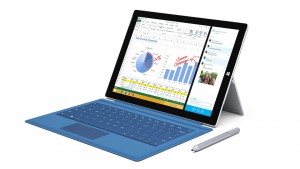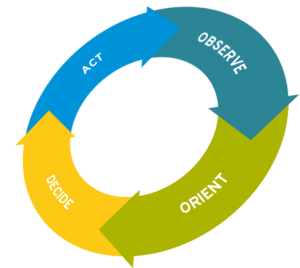Jour 703 Microsoft signe un partenariat avec le Ministère de l’Education Nationale français et c’est le monde du logiciel libre qui s’émeut, le qualifiant « d’indigne des valeurs affichées par l’Éducation Nationale ». Mon point de vue n’engage que moi et pas la société qui m’emploie, à savoir Microsoft, mais là je ris devant cette polémique stérile et inutile. On veut opposer le logiciel « libre » qui donne la liberté, je cite : d’utilisation du programme, d’étudier le code source du programme, de modifier le programme et de distribuer des copies du programme original et modifié, au logiciel « privateur » qui privent les utilisateurs de leurs libertés et les maintient, je cite toujours, dans un état de division et d’impuissance.

J’adore les ayatollahs du libre ! J’en connais d’ailleurs qui utilisent des Mac ou des iPhone, heureuse ironie, pour un des systèmes les plus « fermés » et « privateurs » du monde. Evidemment, certains achètent leurs machines sans système d’exploitation et y mettent Linux ou se débarrassent de l’affreuse installation de Windows qui s’y trouve pour aussi y installer Linux. Parfois en souffrant longtemps à la recherche des bons pilotes vidéo ou autre, mais c’est pour la bonne ultime cause de la liberté. D’ailleurs quand ils n’utilisent pas d’iPhone, ils ont un téléphone sous Android, open source certes, mais quand même financé par toutes les informations que récupèrent Google à l’insu de leur plein gré.

Le logiciel libre c’est un peu comme l’anarchie, tout le monde est pour, mais au final seule une poignée d’irréductibles s’y soumettent, parce que la démocratie, le Mac et Windows, c’est loin d’être parfait, mais ça fait le boulot. Comme disait Churchill, « la démocratie est un mauvais système, mais elle est le moins mauvais de tous les systèmes. » Pas faux ! Libre et propriétaire ne s’opposent pas, ils se complémentent. Ils obéissent à des logiques différentes. Vouloir les opposer, c’est ignorer l’innovation, c’est tourner le dos aux bonnes idées, c’est tout simplement faire preuve d’un manque d’intelligence. Démontons rapidement les quatre pertes de libertés susmentionnées :
- Utilisation du programme. Je me gratte la tête, mais si j’acquiers un logiciel qu’il soit libre ou propriétaire, je suis libre de l’utiliser. Évidemment, si je m’abonne, je peux perdre cette liberté si j’arrête de payer. Je récupère une voiture, je veux qu’elle roule en toute sécurité.
- Étudier le code source du programme. Pour une vaste majorité des gens, le code source n’a aucun intérêt et qui plus est même avec un peu de compétences informatiques, peu de gens sont capables de lire du langage C, du Python ou du Perl. A quoi bon savoir comment fonctionne un moteur à explosion quand tout ce que je veux c’est une voiture pour me déplacer.
- Modifier le programme. Idem à précédemment. Une vaste majorité de personne n’ont aucune envie de modifier le programme. Je ne mets pas les mains dans le moteur de ma voiture…
- Distribuer des copies du programme original et modifié. Je me fiche pas mal, comme une très grande majorité d’utilisateurs, de distribuer le programme, ce qui m’importe généralement c’est de distribuer le résultat de mon travail avec le dit logiciel, comme par exemple un texte ou une feuille de calcul. Et pour ce qui est des logiciels dits de bureautique, ceux de Microsoft permettent de partager dans à peu près tous les formats possibles y compris ceux de l’Open Source comme OpenDocument (ODF) ou Office Open XML (DOCX).
Personne n’enferme personne dans une technologie, à part ceux qui veulent s’y enfermer, comme généralement les ayatollahs du libre, non par souci réel de défense des libertés, mais par posture contre l’industrie du logiciel propriétaire. Les deux peuvent cohabiter harmonieusement et vivre ensemble sans s’opposer en permanence. Pour preuve la coopération entre Red Hat et Microsoft, par exemple, ou le support de Linux sur Azure, mais c’est un débat qui dépasse le novice. Alors oui je préfère que mes enfants s’habituent à Microsoft Office, car il y a 99% de chance que c’est ce qu’ils trouveront dans le monde du travail. Je leur donne aussi la compétence pour se faire une opinion de Google ou d’Apple par exemple. Le monde n’est ni libre, ni propriétaire, il est ce que l’on veut bien en faire. Libre ou propriétaire, c’est comme faire le choix entre vin blanc et vin rouge, il est un temps pour tout !




















